How to Find Reliable Suppliers in India
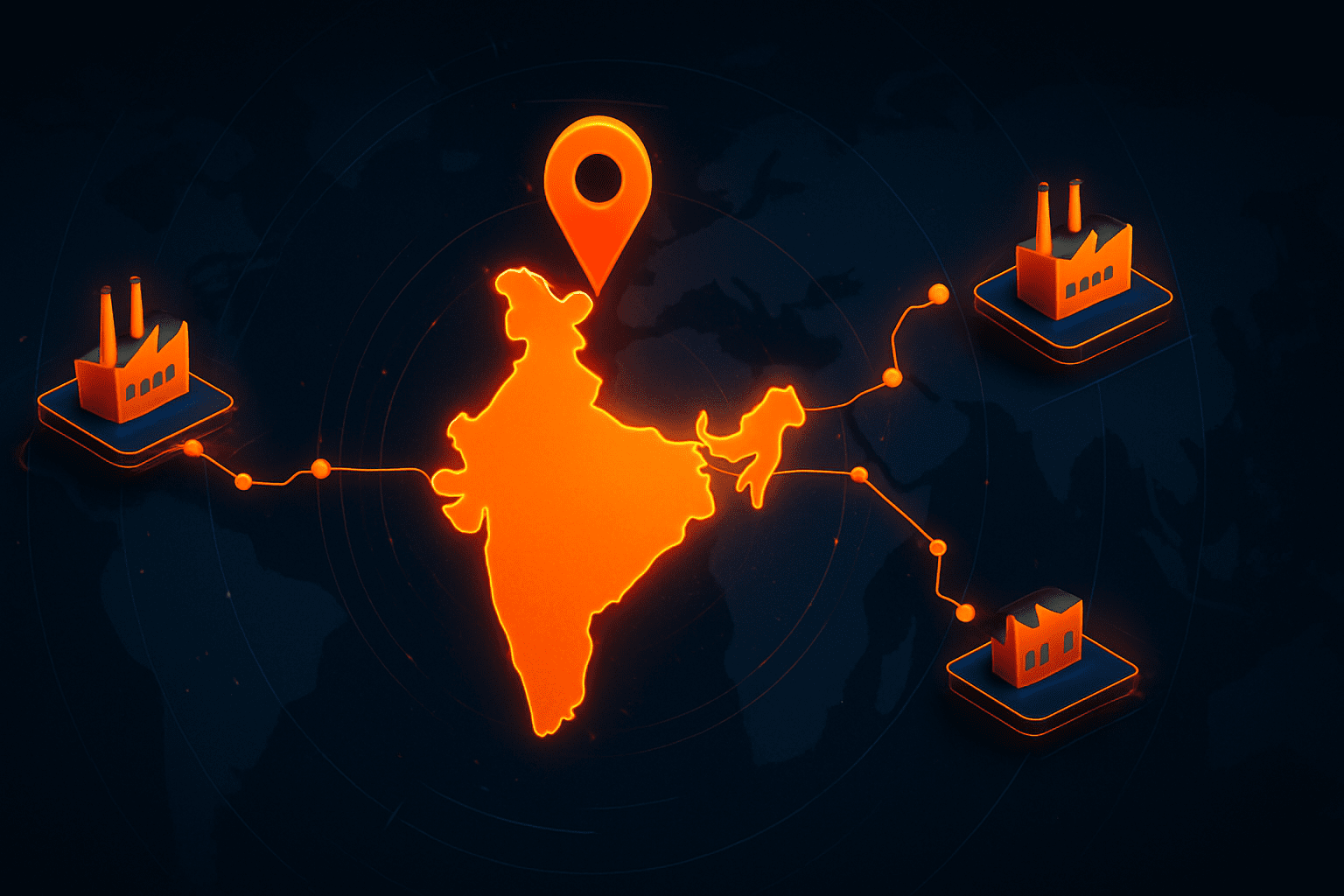

Key Takeaways:
In this article, we cover everything you need to know about finding top-tier suppliers in India.
You’ll learn why India is gaining global attention, the common challenges companies face when sourcing there, and, most importantly, the most effective channels for finding reliable suppliers.
Ready to diversify your supplier base and explore opportunities in India?
Let’s get started.
Is India becoming the new China?
Maybe not just yet, but imports from India are certainly on the rise.
According to the United States Trade Representative, U.S. goods imports from India totaled $87.4 billion in 2024, up 4.5% ($3.7 billion) from 2023.
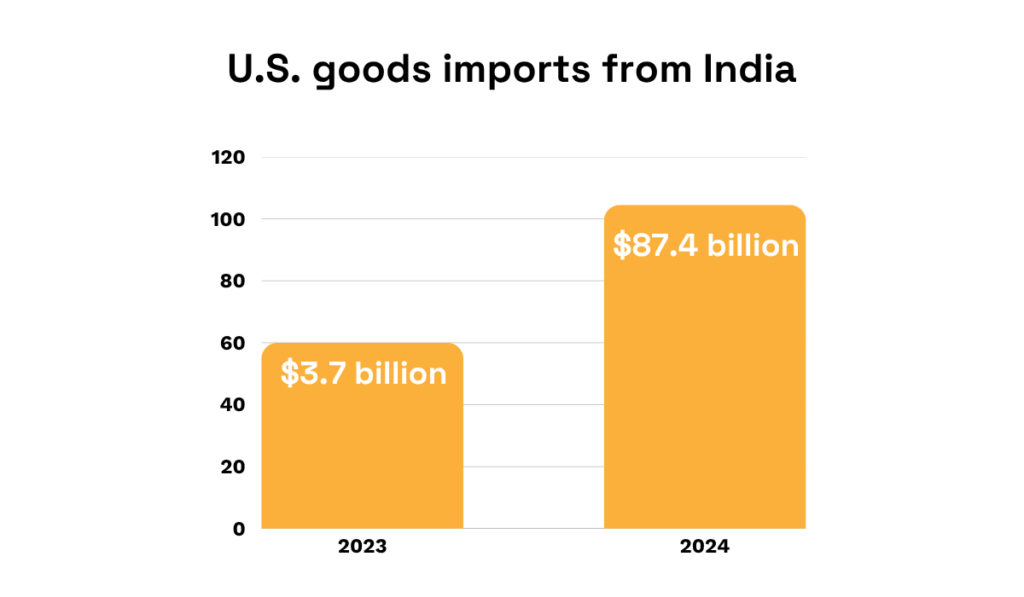
Illustration: Veridion / Data: United States Trade Representative
This growth is driven by two factors.
First, government initiatives like Make in India—a program aimed at encouraging companies to develop and manufacture products in India—are boosting investment in infrastructure and digitalization.
As a result, it has become much easier and more streamlined to do business with Indian companies.
Second, growing geopolitical risks are prompting businesses to diversify their supply chains.
This is especially true in the U.S., where steep tariffs on Chinese goods have made sourcing from China increasingly expensive.
Businesses are looking for more stable and cost-effective alternatives, and India seems like a promising option right now.
For example, Apple has begun shifting production of U.S.-bound products, particularly iPhones, from China to India and Vietnam.
Apple CEO Tim Cook explained the rationale:
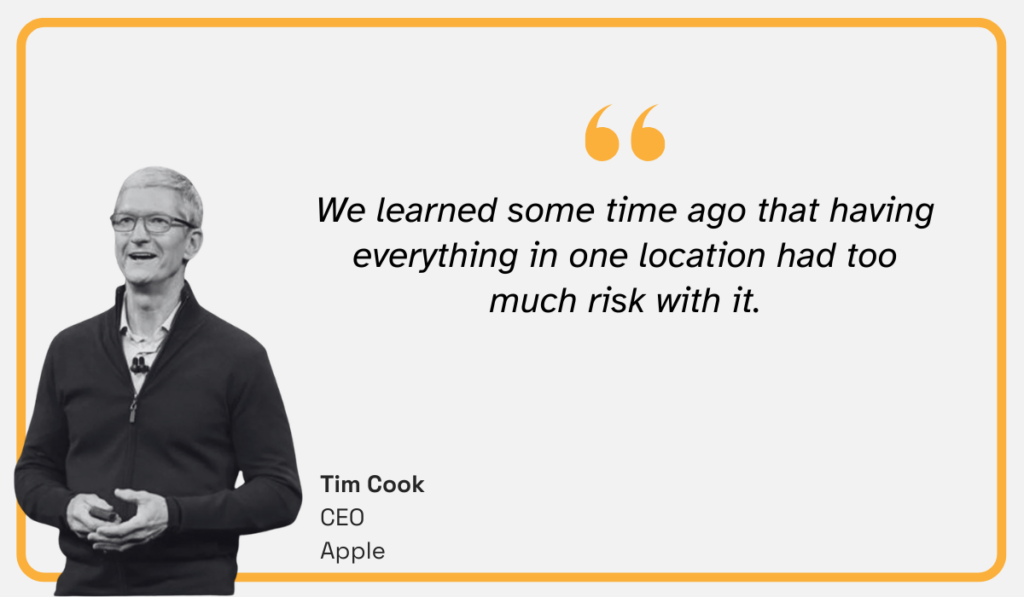
Illustration: Veridion / Quote: Supply Chain Digital
Apple is far from alone.
Companies like Rolls-Royce, Hell Energy, Airbus, Decathlon, and Ikea are also turning to India as a strategic sourcing and manufacturing hub.
And more will follow.
Sourcing from India comes with its own challenges, particularly when it comes to identifying reliable, export-ready suppliers.
Many Indian suppliers are domestically focused and may lack experience with international markets.
Consequently, they may be unfamiliar with export documentation, labeling requirements, or global certifications unless they’ve previously worked with Western clients.
Then there’s infrastructure and logistics.
Brittain Ladd, AI Supply Chain Management and Logistics Consultant at Six Page Consulting, notes:
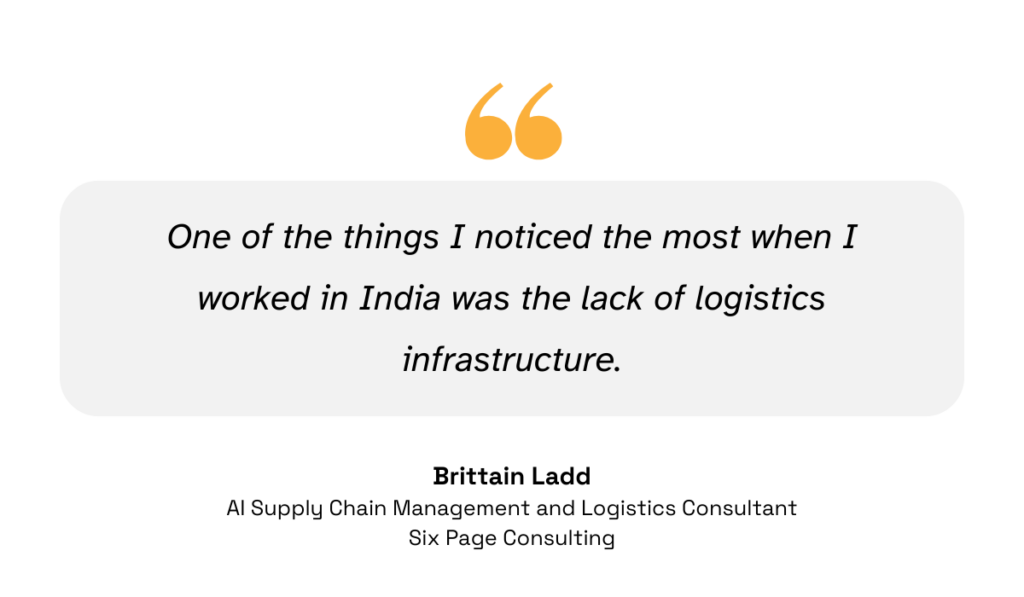
Illustration: Veridion / Quote: Supply Chain Management Review
India’s vast geography, combined with underdeveloped road networks and congested ports, can pose considerable transportation challenges and hinder the smooth movement of goods.
In other words, costly delays are a real risk.
Overall, while India offers many perks as a sourcing destination, it’s important to understand that not all suppliers are fully prepared to meet the needs of foreign businesses.
That’s why extra due diligence is a must.
You need to know where to look and how to assess suppliers to find those truly capable of delivering at a global standard.
Here are some popular B2B marketplaces to get you started.
Although Alibaba is widely known as the largest platform for sourcing Chinese suppliers, it now features thousands of Indian manufacturers and wholesalers across various categories:
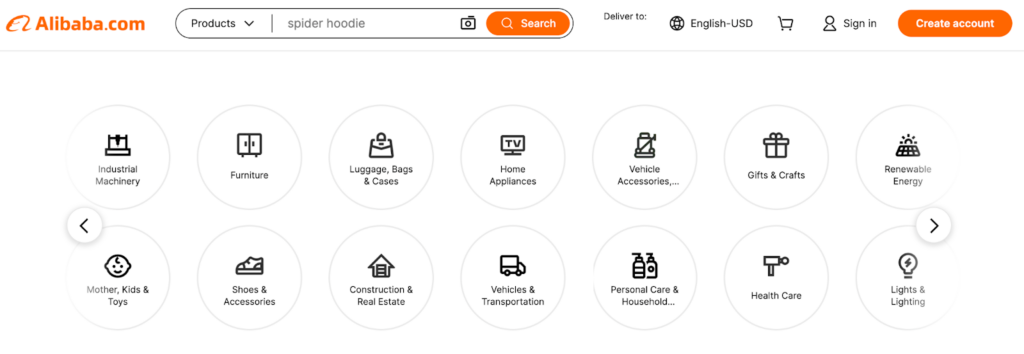
Source: Alibaba
It’s definitely a solid starting point for finding reliable vendors in India, especially for beginners.
The platform is user-friendly and allows you to filter suppliers by different criteria such as location, lead times, product category, minimum order quantity, certifications, and more.
Plus, each supplier has a detailed profile, which typically includes:
This makes it quick and easy to narrow down options that meet your specific requirements.
That said, quality can vary significantly.
If you’re not cautious, you may receive products that don’t exactly match your expectations.
One Redditor learned this the hard way:

Source: Reddit
So, if you choose to use Alibaba, always request samples and do your due diligence.
Be wary of deals that seem too good to be true, watch out for negative reviews, and never agree to payments made outside the platform.
Global Sources is a Hong Kong-based sourcing platform that connects buyers with verified global suppliers, including an expanding base of Indian manufacturers.
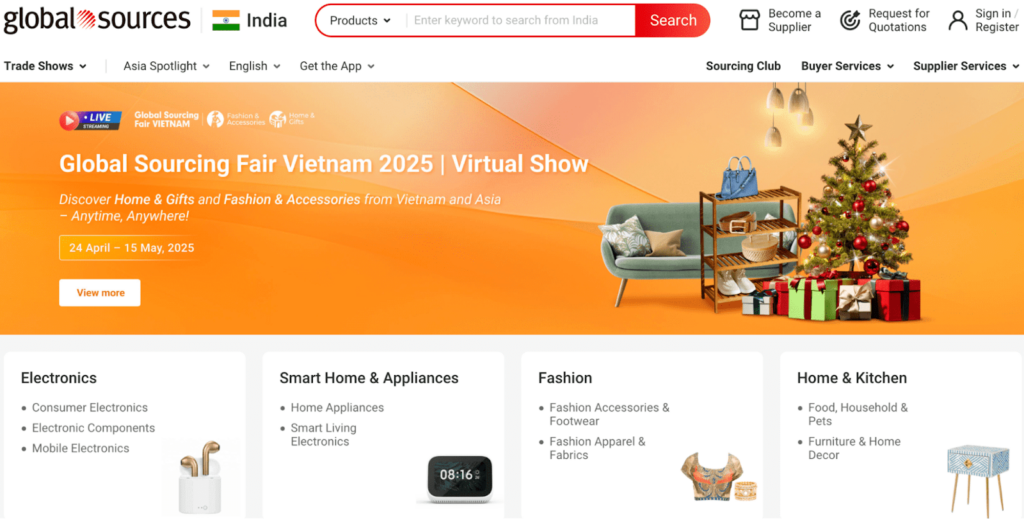
Source: Global Sources
The platform stands out for its rigorous supplier vetting, which includes third-party verification, factory audits, and certifications, often matching or even exceeding Alibaba’s standards.
Essentially, on Global Sources, you’ll find fewer suppliers, but they’ll certainly be more serious and experienced.
Vendor profiles are highly detailed, too, typically including:
Some listings also feature 360-degree virtual factory tours, boosting transparency and trust.
Compared to other platforms, Global Sources arguably provides the most detailed supplier profiles.
Here’s just a portion of one such profile:
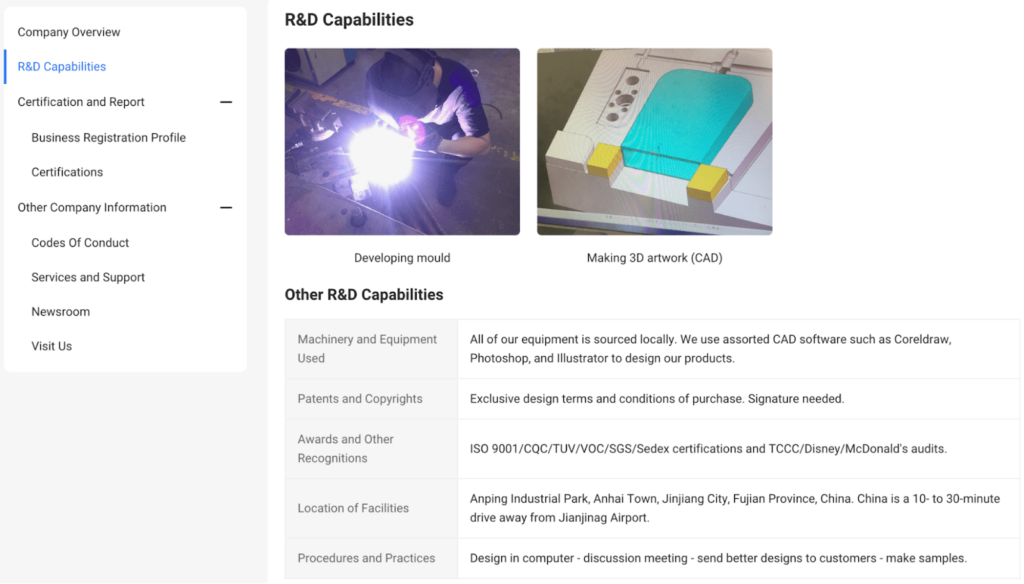
Source: Naike Group on Global Sources
However, here’s the trade-off: the supplier base is mostly dominated by Chinese and Southeast Asian companies.
While Indian suppliers are definitely present, their numbers are limited compared to platforms that focus exclusively on Indian exporters.
So while quality is high, selection may be narrower.
Unlike Alibaba and Global Sources, IndiaMART is specifically focused on India.
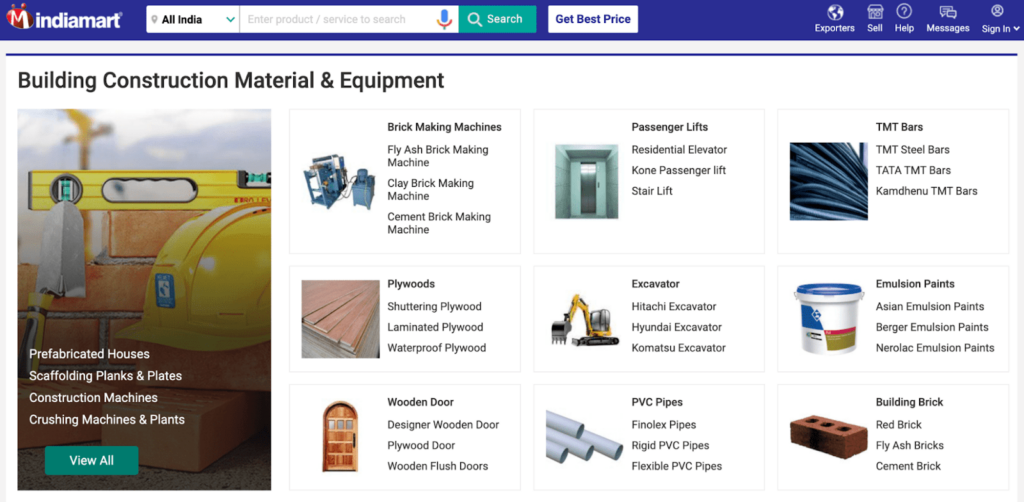
Source: IndiaMART
As the largest B2B marketplace dedicated to Indian suppliers, it offers a wide range of products, from industrial machinery, agricultural goods, and chemicals to textiles, handicrafts, and more.
Similar to Alibaba and GS, suppliers have their landing pages, which include:
You can also search for suppliers by specific Indian cities or states to refine your results and even request custom quotes.
However, IndiaMART doesn’t offer as many search filters as the platforms we mentioned previously, which can make finding the exact product you need more time-consuming.
Like any online B2B marketplace, it’s important to stay vigilant against scams or misleading listings.
On Trustpilot, some IndiaMart users report issues such as receiving low-quality goods, incorrect items, or nothing at all.
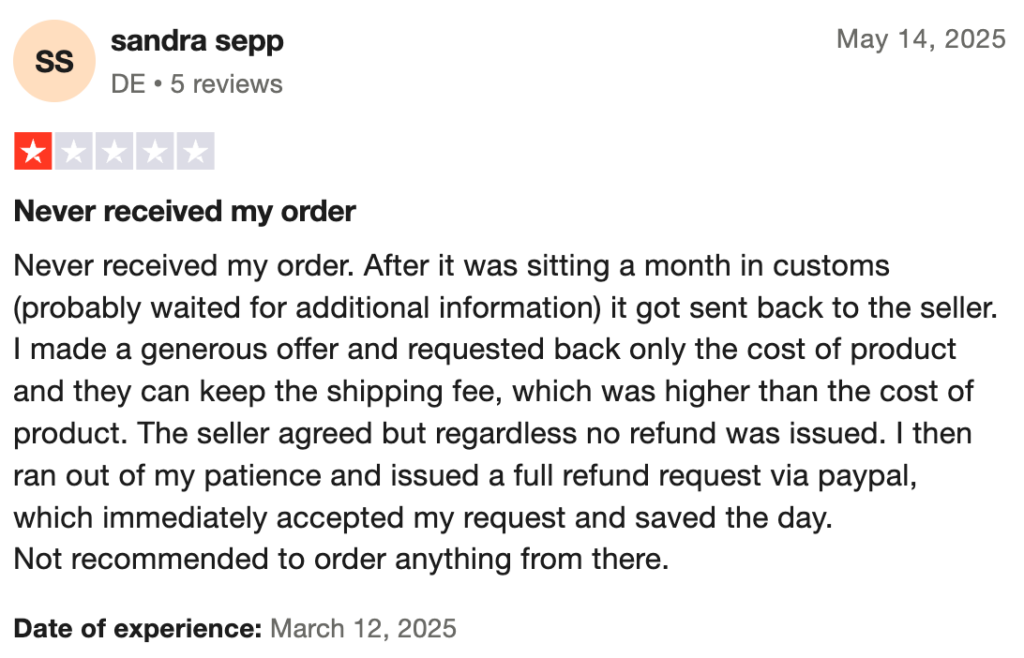
Source: Trustpilot
That said, with a growing number of global buyers, the platform has been investing more in security.
For example, in 2022, it partnered with Tazapay, a payment platform that helps facilitate cross-border transactions for Indian exporters.
Still, proceed with caution, and make sure to independently verify each supplier before committing to a purchase.
Like IndiaMART, TradeIndia is primarily focused on Indian businesses, offering access to a vast network of domestic manufacturers and exporters.
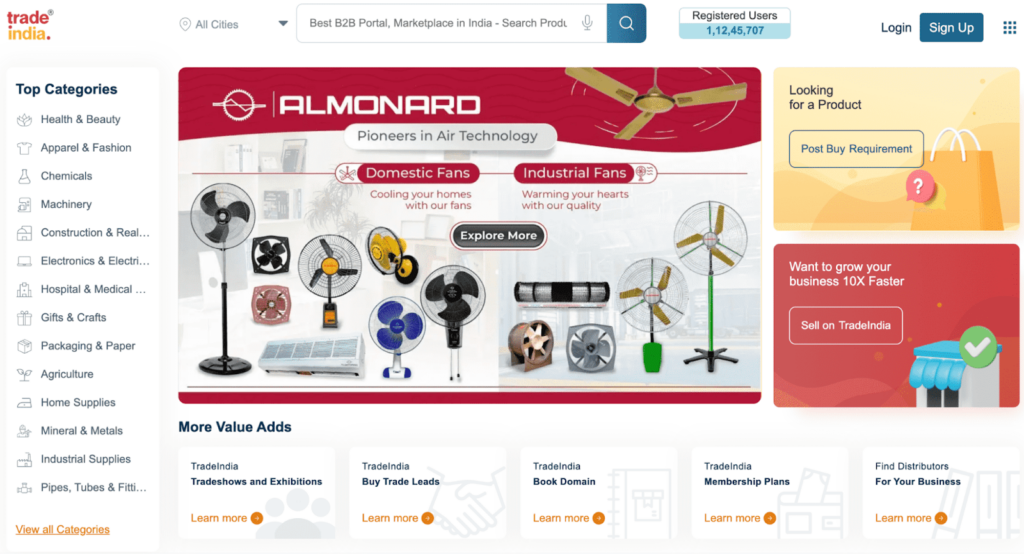
Source: TradeIndia
While it’s slightly less well-known than IndiaMART, the platform still hosts millions of suppliers across a wide range of product categories, including chemicals, packaging, textiles, and more.
It offers some search and filtering tools, though they are still not as advanced as those found on Alibaba.
Supplier profiles include the following details:
But, unlike profiles on IndiaMART, they don’t show customer reviews.
TradeIndia also features a payment gateway service called TIPay.
It aims to reduce payment risks for suppliers and ensure that buyers receive the correct products before funds are released.
However, be aware that this system doesn’t offer complete protection against scams or fraudulent activity.
Clearly, B2B marketplaces aren’t perfect solutions.
They offer access to a wide range of options, but they also come with significant risk.
So, here are some additional sourcing channels you might find more reliable.
Hiring a sourcing agent when purchasing in India can significantly streamline the process, especially for businesses new to the market.
A reliable agent can help you identify and verify suppliers, negotiate pricing, oversee quality control, and manage shipping logistics.
In short, they help you save time and money while also minimizing risk.
For instance, the sourcing agency GetAhead assisted Codex Energy, a Texas-based data center and energy company, in cutting costs by 30% on dry cooling systems:
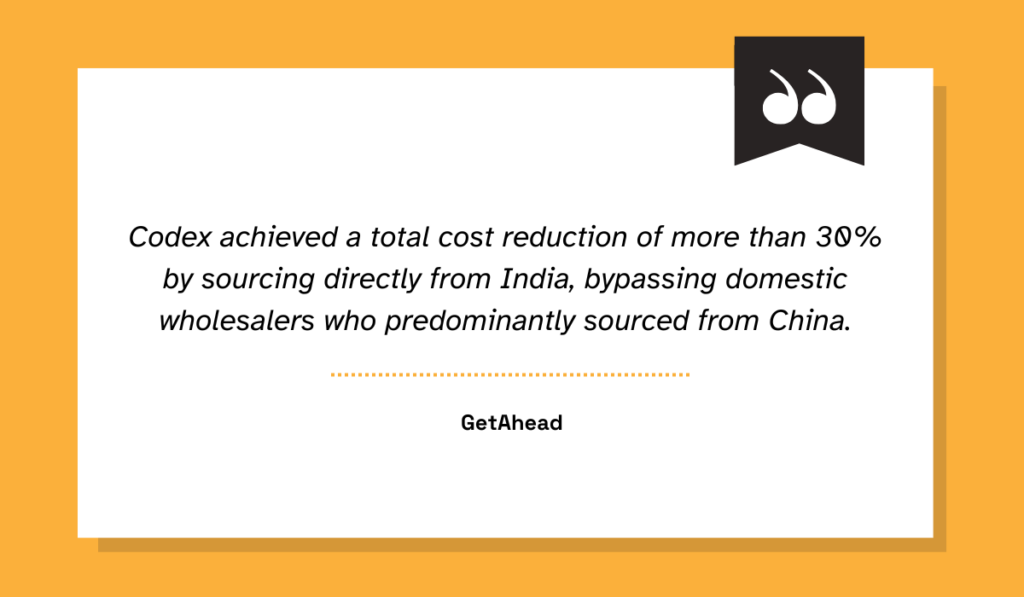
Illustration: Veridion / Quote: GetAhead
GetAhead worked closely with Codex’s lead engineers to screen and vet suppliers, conducting on-site factory inspections to confirm production capabilities.
Without such local expertise, Codex probably would have struggled to achieve these results independently.
Of course, all that convenience comes at a price.
Sourcing agents typically charge a percentage of the order value, usually between 5% and 10%, according to Zignify.
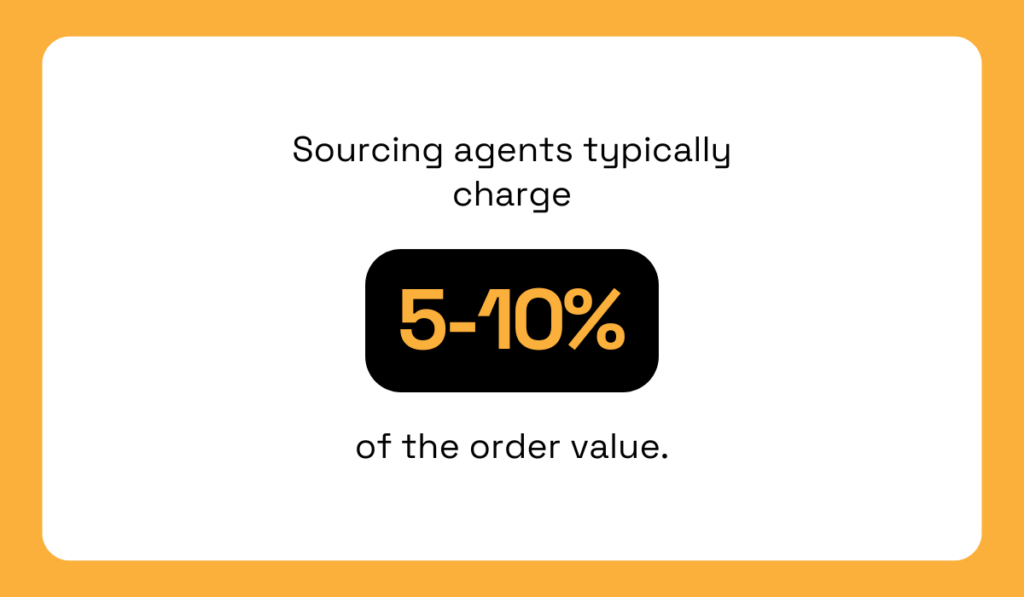
Illustration: Veridion / Data: Zignify
So, while it may not be the best fit for small, one-off purchases, it can be well worth it for large orders or long-term sourcing strategies.
Just make sure the math adds up—and that the savings and support outweigh the cost.
Trade shows are an excellent way to find reliable suppliers from India.
They give you the chance to meet vendors face-to-face, examine products firsthand, assess quality, and even negotiate deals on the spot.
Best of all?
You’re there in person, so you don’t have to worry about getting scammed like you might on B2B platforms.
India hosts a wide variety of trade shows across industries, including:
And that’s just scratching the surface.
No matter your niche, there’s almost certainly a trade show for you.
To find events that match your industry, visit 10times, a global event discovery and networking platform, where you can filter by topic, date, location, and more.
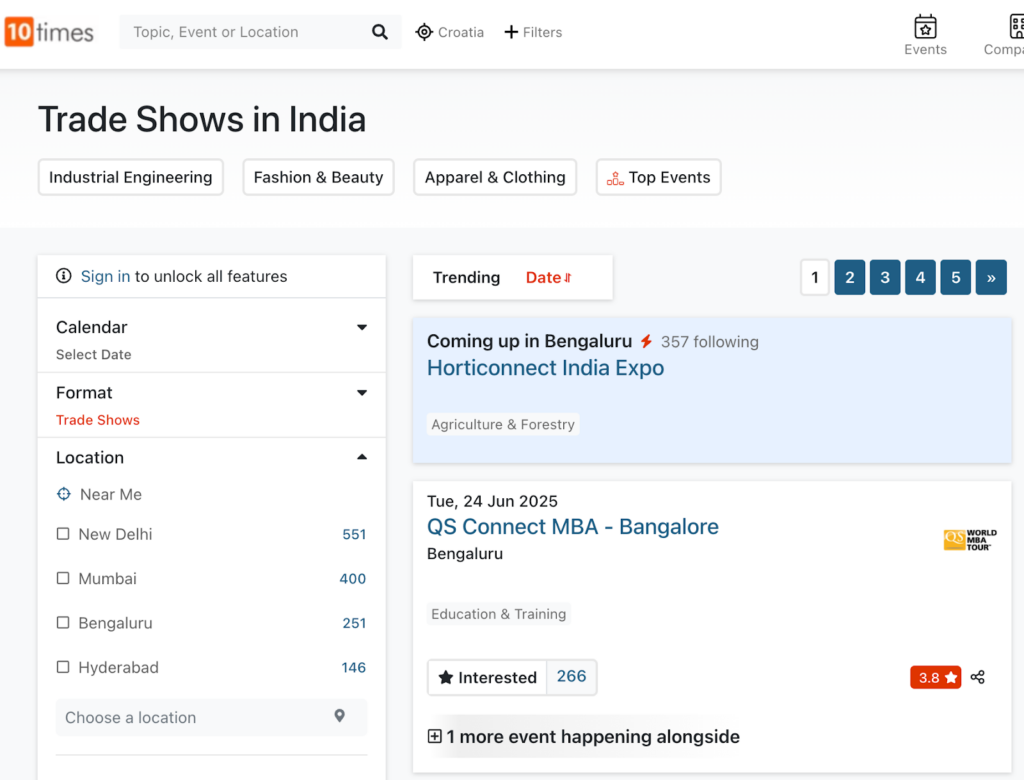
Source: 10times
Each event listing includes descriptions, exhibitor details, reviews, entry fees, and other key information, as shown below:
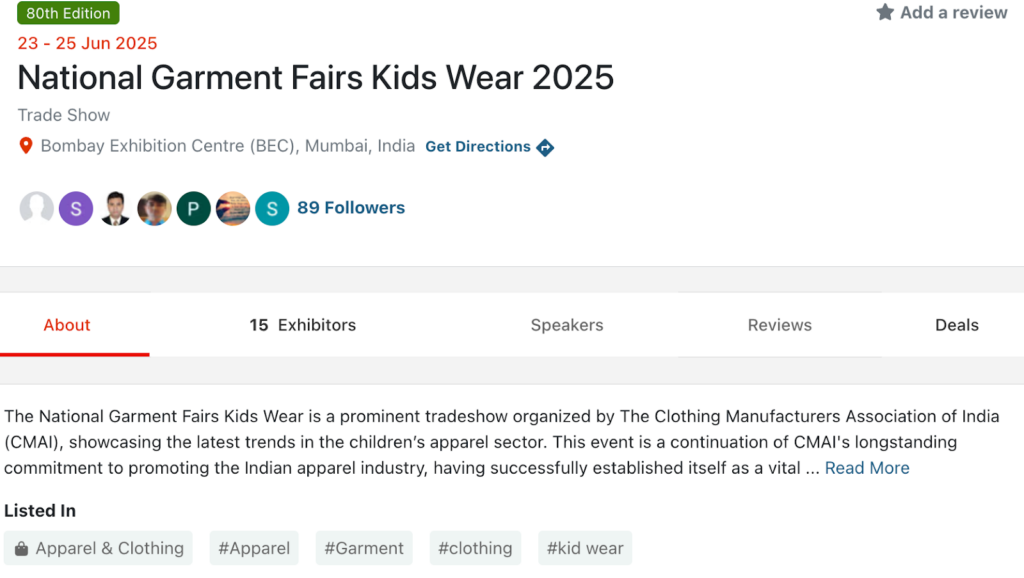
Source: 10times
It’s one of the most effective ways to discover relevant trade shows in India.
Export Promotion Councils (EPCs) are government-backed organizations that represent specific industry sectors such as handicrafts, apparel, jewelry, engineering goods, and more.
They are a great resource for finding Indian suppliers because, unlike B2B marketplaces, they maintain directories of verified, compliant, and export-ready exporters.
According to the Indian Ministry of Commerce and Industry, there are fourteen Export Promotion Councils under their administrative control, including:
EEPC India is one of the most prominent EPCs.
Its website features an e-catalogue with a wide range of products, including pumps and valves, medical devices, hand tools, and more.
Users can also search a supplier database and filter by product, HS code, region, state, city, and other criteria.
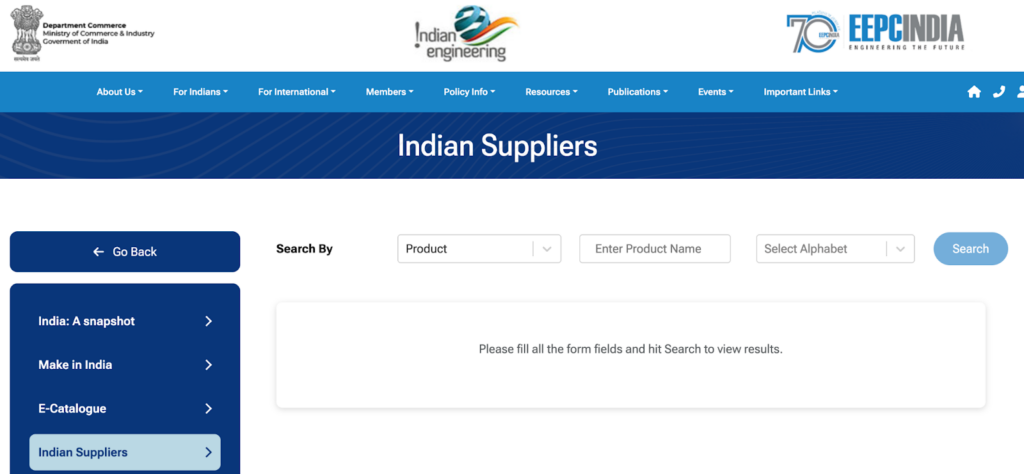
Source: EEPC India
Keep in mind that EPCs are not B2B marketplaces like Alibaba or IndiaMART.
You won’t be able to chat, compare prices, or make transactions directly through the site.
Instead, you’ll need to contact suppliers individually.
While this may take more time than using B2B platforms, it will give you access to more reliable and vetted suppliers.
But what if all those sourcing methods fail?
What if you can’t afford to attend trade shows, or don’t have the resources to hire sourcing agents?
What if verifying information found on B2B platforms is just too time-consuming and difficult?
That’s when you turn to Veridion, an AI-powered supplier sourcing platform designed to eliminate all these hurdles.
Veridion uses AI and ML to extract data from billions of online sources, including government registries, customs filings, local business listings, supplier websites, ESG disclosures, and more.
If a company has even a minimal digital footprint, Veridion is likely to find it.
Veridion currently offers detailed profiles on 3,069,143 businesses in India alone.
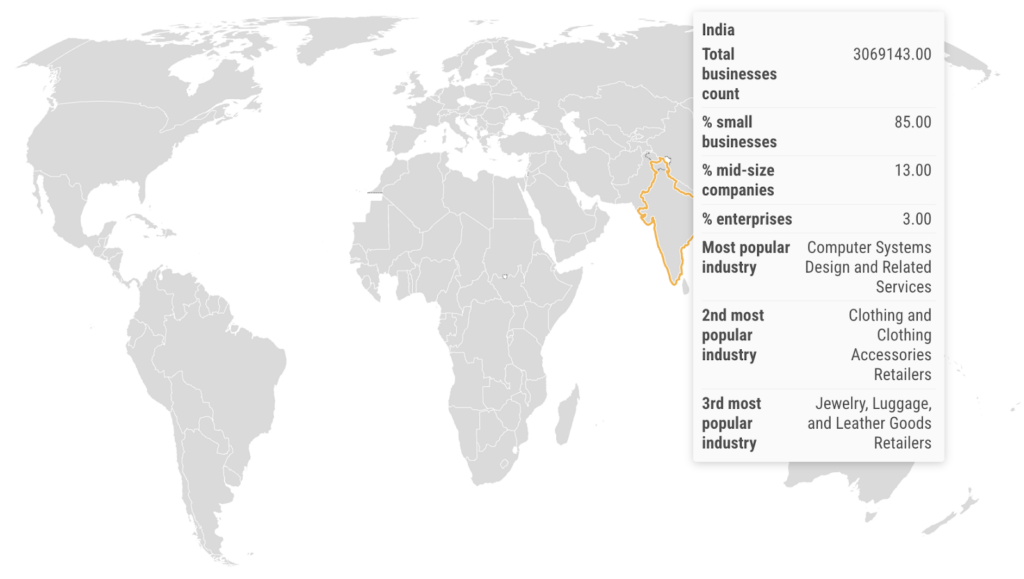
Source: Veridion
Each profile includes rich, actionable data such as:
Unlike traditional B2B marketplaces or EPCs, Veridion refreshes its data weekly, ensuring you always have access to the most accurate and up-to-date information.
And the best part?
With our newest tool, Scout, finding the right suppliers has never been easier.
Just type what you’re looking for in plain, natural language:

Source: Veridion
And Scout instantly delivers supplier matches tailored to your needs:
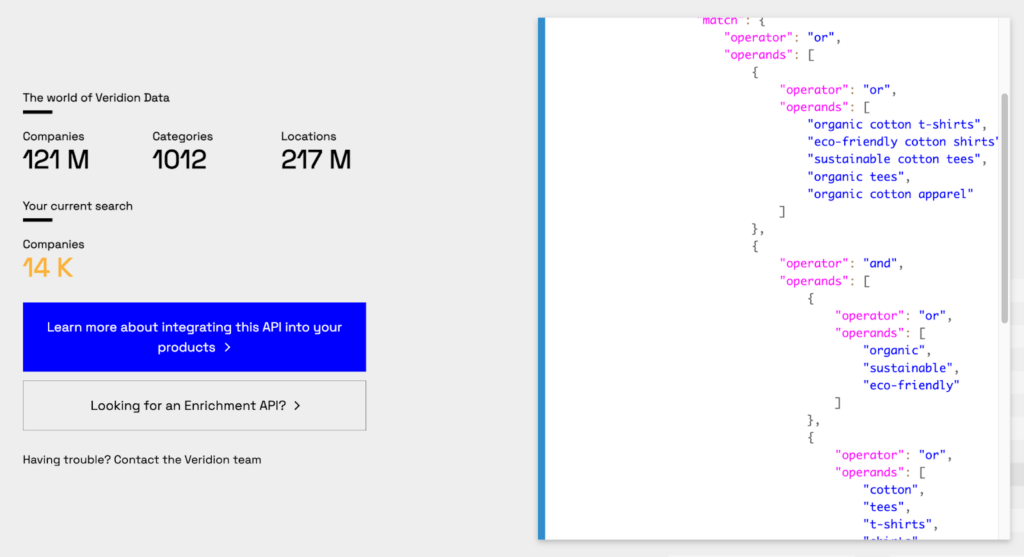
Source: Veridion
The era of deceptive listings, outdated databases, and inefficient sourcing is finally over.
With Veridion, you have the tools to make informed, data-driven decisions—fast.
India’s supplier landscape may be complex, but that’s precisely what makes it so full of opportunity.
With a bit of patience, thorough due diligence, and the right tools, you can find not just reliable partners but ones that drive innovation, resilience, and growth.
Clearly, the global sourcing landscape is changing.
Companies are no longer willing to depend on a single country for suppliers.
China is no longer the sole sourcing hub.
Risks are increasing.
Only those willing to diversify and adopt a strategic approach to sourcing will be able to overcome disruptions and thrive.
And India is a good place to start that journey.